Welcome to my blog!
A printer has long ceased to be a luxury for ordinary computer users and is already almost a mandatory attribute of home office equipment.
It may immediately seem that choosing a printing device for your home will not be difficult, but when you go to the store, you understand what to do right choice not as simple as it seemed at first.
In this article, I will tell you how to choose a printer for your home and note what you need to pay attention to when choosing one. You need to approach the choice of a printing device seriously so that the money spent on it does not end up being wasted and your printer does not become just a piece of furniture that has no practical use.
This article will only talk about printers; multifunctional devices will not be considered, since this is a topic for a separate article.
Before buying a printer, you need to clearly determine in advance what capabilities and functionality you need.
For example, answer the following questions to yourself:
Will you be printing color images or just monochrome?
Will you be printing images on thick paper: business cards, photographs.
Will you be printing images directly from memory cards?
Possibility of printing on CDs and DVDs.
Will you print on it often or rarely?
Interface for connecting the printer to a computer: USB, network cable or WI-FI.
These are the questions you should answer before buying a printer. Some of these questions are key when choosing a printer, and some are only additional and optional, but this will help you choose the most suitable model for you.
Of course, there may be more such questions, everyone may have their own requirements for a printer, but the answers to them sharply narrow the choice of printer model and its purchase becomes more rational.
In this article, I will review some of these questions and give my own answer to them, so that you can choose the right printer for your home that meets exactly the characteristics you need.
The article is large, so I divided it into parts and included links to each part in the content. If you are interested in something specific, you can immediately go to this point.
Types of printers.
First, let's decide on the type of printers, find out what types of printers there are and which ones are suitable for home use. I will only briefly describe their characteristics and features, and conclude which of them are this moment relevant for home use.
Printers that print on A4 paper are mainly used for home use. standard size ordinary sheet and density 80g/m2. But sometimes printers are also used that support printing on A3 paper. If you don't need a stamp on large sheets, then A4 format is quite enough for you.
Laser printer.
Laser printer– for printing, toner (powder) is used, which is located in the cartridge. Printed circuit board processes the signal and the laser beam sends this signal to the photo drum, where the beam creates static voltage and, as a result, the image turns into a real one. And then the toner sticks to this drum and when the paper is rolled through the drum, the image is transferred to it.
After which the paper passes through a thermal roller, where it is heated to approximately 200 degrees and the powder is tightly sealed into it, which makes the image resistant to fading and moisture.
Laser printers are ideal for printing texts and tables on any type of plain paper. They are not suitable for printing high-quality photographs, since this technology image creation does not yet allow you to take high-quality photographs.
The advantage of a laser printer is the large resource of cartridges, 1500-2000 regular text pages, high speed printing and ease of maintenance.
The downside is high power consumption, up to 300 watts when printing and above, as well as the high cost of toner cartridges.
LED printer.
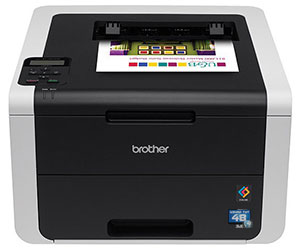
LED printer– the printing technology is approximately the same as that of laser, but instead of a laser, a strip consisting of several thousand LEDs is used.
Due to the fact that such a printer uses LEDs, there is no mechanical part that a laser printer has to move it. The LEDs stay in place; a certain diode just lights up at the right moment.
Due to this, such a printer is slightly more reliable than a laser printer and is smaller in size. It’s difficult to give a definite answer regarding the quality of printing and its speed, compared to laser ones; there are supporters for both printer models. Moreover, technology does not stand still and LED printers are already catching up and overtaking laser models in some ways.
Jet printer.
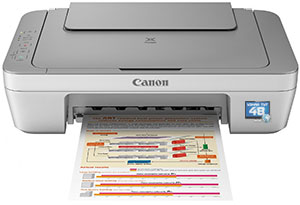
Jet printer– Ink is used for printing. The essence of this method is that through microscopic nozzles of the print head, ink from the cartridge is supplied to the paper under pressure. The required pressure is created either by heating the ink (thermal inkjet printing) or by changing the size of the head chamber (piezoelectric printing).
Thermal ink printing is found in printers from companies such as Canon, Lexmark, HP, and piezoelectric printing is found in printers from Epson.
Inkjet models are very popular as home printers. These are universal machines that are great for both text printing and image printing.
The disadvantage of inkjet printers is the low life of the cartridges and the fact that the ink can dry out when the printer is idle.
Sublimation printer.
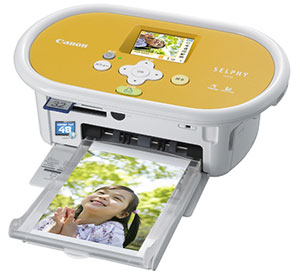
Sublimation printer– printing occurs by applying a solid-state ink to photographic paper. Between the heating element and special photo paper there is a film with three colors of ink. When the film is heated, the ink begins to evaporate and is transferred in the form of steam to the photographic paper, in which the pores open due to the heat. After the photo paper cools, the ink adheres tightly to it. Typically, printing occurs in three stages, as ink is applied to the paper one at a time.
This method allows you to take photographs of very good quality, but such images have too high a cost, since the cartridge has too little resource.
Sublimation printers have a narrowly targeted scope of application; they are used for printing photographs, business cards, cards... Printing text on such printers does not make sense, so for home use as universal printer, such a printer will not work.
Matrix printer.
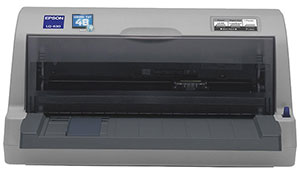
Matrix printer– the image is created from dots by impact, a special needle presses on the ink ribbon in the right place, thereby creating a dot. From them the image is formed. This printing technology is somewhat reminiscent of typewriter technology.
Such printers are not used as home printers; their capabilities for printing high-quality images and text are too limited.
Although they are morally outdated, dot matrix printers have not lost their relevance to this day. They can be found at the post office, in banks, where they are used to print receipts, at railway stations and airports, where they are used to print tickets. Based on them, I make composters for tickets on public transport.
Dot matrix printers will not leave the scene any time soon; ease of maintenance and cheap consumables make them popular among government agencies. institutions and enterprises.
Summarizing the description of printer types, we can conclude that for home use you need to choose laser, LED or inkjet printers, since these are the most universal types of printing devices, which is what the average user needs.
Sublimation printers will be too expensive to maintain, and matrix printers are not suitable for their technical characteristics.
Since laser and LED printers have approximately the same characteristics and printing technology, for ease of explanation I will combine them into one group “laser printers” and everything that will be written about laser printers will also apply to LED printers.
Which printer to choose, inkjet or laser.
And so, the first thing you need to do to choose the right printer for your home is to decide what type to choose, laser or inkjet.
To do this, you need to decide what you will print on it. If we talk about a laser printer, I recommend choosing monochrome models for your home.
Color laser printers will cost you too much to maintain, for example, if the price of a printer is 8,000 rubles, a set of original cartridges for it will cost you about 20,000 rubles. Consider whether you are willing to pay that amount for printing on it. A monochrome printer will only need one cartridge, costing about 5,000 rubles.
The laser printer prints text perfectly, the font is high-quality and professional, resistant to moisture and fading. You can also print photographs and drawings on a laser printer, but the quality of such images cannot be called excellent.
If the quality of the photo is not important to you, for example, a photo for a honor board, then you can use laser printer, but again, pages printed on a color laser printer will have a high cost.
It is better to choose a laser or LED printer if:
- You need to print large volumes of documents;
- If you only need monochrome printing;
- If the printer is left idle for a long time;
- If you are not going to print photos;
If you want to print color images in addition to text, then you should choose jet printer. Inkjet printers print well any type of image and on almost all types of paper, film, envelopes, CDs...
All inkjet printers come in color by default, which allows the user to print any image in good quality.
The highest quality models of inkjet printers no longer lag behind laser ones, both in terms of printing speed and cartridge life, which makes their purchase more profitable than a laser one, due to cheaper ink cartridges. The continuous printing system, which makes the cost of printing one sheet on an inkjet printer very cheap, helps to increase the life of the cartridge especially well.
If you are interested in printing photos, then an inkjet printer will cope with this task better than its laser brother.
It is better to choose an inkjet printer if:
- You need color print;
- You need to print images onto a CD or DVD discs, film, etc.
- You need the ability to print high-quality photographs;
As a rule, you want to have a printer at home on which you can print whatever you want - text, congratulations and business cards, but some people need to draw images on CDs.
In general, decide for yourself which printer you need; once you have decided on the type of printer, you can choose the following characteristics that you need.
Printer cartridge resource.
Once you have decided what type of printer you need, you can choose the rest of the printing device options. One of them is the cartridge resource; the larger it is, the better; one printed page will cost less.
It's no secret that printer manufacturers make their main income from sales. Supplies for them, and not from the sale of the printers themselves, since the printer can last for several years, and you will have to buy cartridges for it often if you print a lot.
I recommend that before purchasing a printer, find out what capacity the cartridge of your chosen model has. If for laser and LED printers it is approximately the same for all (1600-2500 pages), then for inkjet models this spread is much greater, from approximately 160 to 2300 pages.
If you spend more when buying a printer, you will later save on buying ink for it. The cost of one black cartridge for it is about 3,000 rubles, this is a cartridge of increased volume, it
has a resource of 2300 pages.
Therefore, do not rush to buy cheap printer, first calculate how much it will cost you to print on such a printer.
Again, I do not write specific printer models, the main thing is that you understand what to look for when choosing a printer for your home.
If you know that you won't be printing very many pages on an inkjet printer and printing photos doesn't bother you much, then you can purchase, for example, a model from the HP Officejet Pro series.
I have been using the HP Officejet Pro 8000 printer for several years and have no complaints about it. It prints quickly, works quietly and most importantly the ink does not dry out.
It happens that I don’t print on it for 2-3 months, but for this printer this is not a problem, for example, with Epson the print head or nozzles would have dried out long ago.
I change the cartridge on it once every 1.5-2 years, in general, if you print occasionally and need color printing, this is what you need.
I wouldn’t recommend it for printing photos; ink consumption will be high, and a set of 4 cartridges will cost you about $150.
CISS for printer.
If you are going to print a lot on an inkjet printer, including photographs or other graphics, then I advise you to buy a model for which there is a CISS. Actually, the system continuous feed ink is now available for almost all inkjet printers, but still, it’s better to make sure that you can buy it specifically for your model.
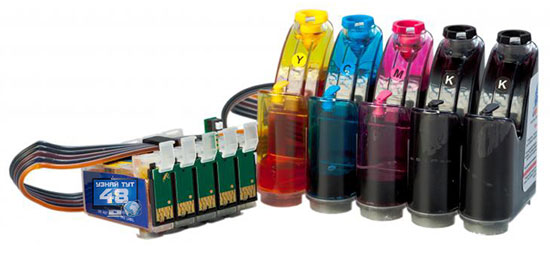
In this case, I recommend paying attention to Epson models. For this company you will definitely find CISS, which makes printing on your printer very cheap.
The resource of one set of CISS is approximately three times greater than the resource of a laser printer cartridge, and refilling a CISS generally costs a penny and any user can handle it. You just need to add ink into special containers.
In addition, piezoelectric Epson printing allows you to take better photos than the thermal inkjet technology of other models.
Keeping up with the times, Epson has released a line of printers called “Print Factory”, where the CISS is already built into the printer and does not need to be purchased separately.
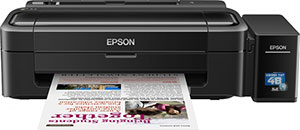
Refilling such printers is also simple; you just need to add ink as needed. All you have to do is choose a model that meets your requirements in terms of its technical characteristics.
The only big minus Epson printers, is that if you don't print for a long time, the ink in their piezoelectric printing system dries out quickly.
You need to understand that if you buy a printer of this model, be prepared to constantly print something.
If you don't need to print anything, create a test page and color its text with all the colors that your printer has and print it at least once a week, otherwise your printer will become just part of the furniture.
Interface for connecting the printer to a computer.
How to choose a printer for your home so that you can print from any device? It’s very simple, you need to choose a model that has the connection interface you need.
There are three ways to connect modern printers to a computer:
1. To USB connector, c via USB cable;
2. To the RJ-45 connector using a twisted pair;
3. With wireless connection Wi-Fi;
The first method is one of the most common; it is well suited if you have only one computer and a printer next to it.
The second method is perfect if you have one or more computers and they are connected to each other via a router. In this case, the printer must also be connected to the router and it will be available for printing on all computers on this network.
If the router distributes Wi-Fi, then the printer will also be available to computers that are connected to the network via Wi-Fi, for example a laptop, tablet, or smartphone.
The third method is suitable if you have a laptop, tablet, smartphone, in general, any gadget that has network connection via Wi-Fi. With this connection, you do not need a network cable and the printer can be placed in any place convenient for you.
You can find out which connection method to a computer your printer supports by looking at its specifications. Think about how you want to connect your printer to your computer in advance so that there are no problems with this later.
Paper weight is a measure of the thickness of paper that the printer can print on. All printers can print on plain paper, but some printers have problems with thick paper.
If the printer does not support printing on thick paper, then you will not be able to print on it, such as business cards or photographs.
For example, on a printer with these characteristics, you can only print on plain paper.
And on a printer with such characteristics, you can print both on plain paper and on photo paper.
Of course, it is better to choose an omnivorous printer with which you will not have problems choosing paper.
Types of printer ink.
If we talk about laser or LED printers, then everything is clear, they don’t have ink, they have powder and there’s not much to choose from here. Inkjet printers are another matter.
There are two types of ink for inkjet printers, water-soluble and pigment, and you also need to think about which ink is best for you to use in advance.
Water-soluble ink – created on the basis of water-based dyes. They are cheaper than pigment ones and when printing photographs, they convey color better. Many photo printers use water-soluble ink. Their main drawback is the lack of moisture resistance of prints; when moisture gets on them, the text or image is blurred.
Pigment ink – created on the basis of pigment dyes. Such inks are more expensive than water-soluble inks, but they are resistant to moisture and fading. They do not render colors as richly as water-soluble ones, but you can only notice the difference in comparison. The disadvantage of such ink is that it dries faster in the print head, which makes further printing impossible.
When using pigment inks, you need to be especially careful to ensure that they do not dry out in the head or nozzles.
What ink the printer uses may not be the main question for you when choosing it; if it suits you in other respects, there is no point in rejecting it just because of the type of ink. You just need to know what kind of ink your printer uses.
How to choose a printer for your home to print on CDs and DVDs.
If the printer supports the function of printing on CD or DVD discs, then you can create your own discs with films, courses, programs, photographs and design them beautifully. Your discs will look much more beautiful if the text and images on them are printed on a printer rather than by hand.
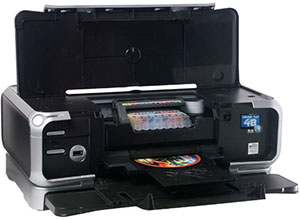
In order for the printer to print on discs, it must have a special tray for CDs. Not all printers have this option, and if you want to create your own disks, then also clarify this point in advance when purchasing a printer. Some models of different price categories for home use are offered by Epson and Canon.
How to choose a printer for your home to print photos.
If you want to choose a printer for your home so it can print nice photos, then this is also not a problem; modern printers allow you to create high-quality photographs at home. Only for this you need to choose a special printer that meets certain technical characteristics.
The requirements for a photo printer are slightly different than for an office model. Laser or LED models are immediately out of the question; they will not make a high-quality print of the photograph.
A sublimation printer produces excellent photographs, but photographs taken with it will be too expensive and of poor quality. home printer This one won't work either.
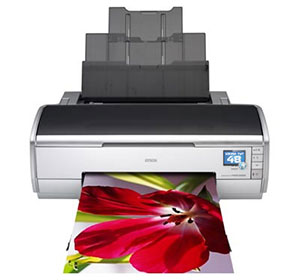
For a home photo printer, you need to choose from the inkjet printer family.
The main characteristics that you need to pay attention to when choosing a photo printer for your home are:
Number of colors;
- minimum drop size;
- the ability to print photos without borders;
- print resolution;
- the thickness of the paper on which the printer can print;
The screenshot shows the characteristics of one photo printer, which shows what parameters it should have.
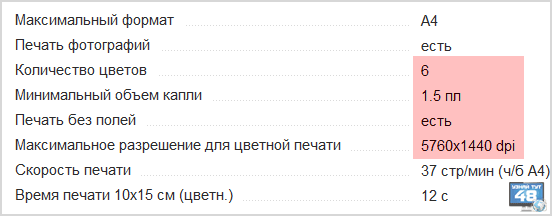
The number of colors the printer has.
A good photo printer should have at least six colors in order to accurately print all shades of color in a photo.
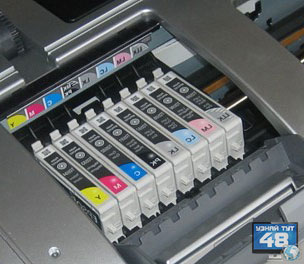
There are models that have eight cartridges with different shades of color, which allows them to print photos at studio quality.
Printer droplet size.
A small drop size is needed for a smoother transition between shades of color in the image. The minimum drop size should be no more than 1.5 picoliter, if the printer has 6 colors, if 8 or more colors, then the drop size can be 3 picoliter, which will not affect the print quality, since additional colors allow you to smooth transition in colors.
Borderless printing.
A good photo printer should be able to print borderless photos so that there is no white padding around the edges of the image.
Photo printer resolution.
A good photo printer should have a print resolution of at least 5760x1440 pixels. The higher the print resolution, the higher quality the image can be printed.
Photo printer paper thickness.
All printers that call themselves with the photo prefix can print on paper up to 300 g/m2, and some on thicker paper. Just check this option when purchasing.
I consider other parameters not important when choosing a photo printer, for example, printing speed or cartridge capacity. Since the main thing here is print quality, not speed, and if you are going to print a lot of photos, then no matter what capacity your printer’s cartridge has, the ink will still quickly run out.
It is imperative to equip your photo printer with a continuous ink supply system; this will save you from many problems associated with replacing cartridges.
Portable printers.
If you need a printer that you would like to take with you from time to time, for example, on a trip, then you should take a closer look at portable models.
Such printers are small in size, self-powered, and sometimes have a carrying case.
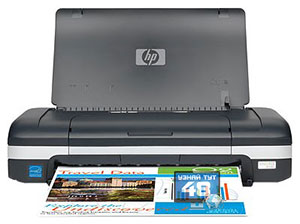
These printers often support direct printing from memory cards, which can be very convenient on the go. The disadvantages of such printers are their small cartridge life.
Well, that’s probably all I wanted to tell you about how to choose a printer for your home, I hope this article will help you make the right choice. To make a choice specific model printer, you will need to study the market in more detail and find out which models currently best meet your requirements.
Finally, I’ll give you some tips on using printers:
Do not connect a laser printer to the operating output of a UPS, as they consume too much power when printing. For these purposes, special sockets on the UPS are used, which are not connected to the backup power system.
The toner of some laser printer models contains carcinogenic substances trichloromethane and styrene; do not replace the toner yourself; this must be done in a specialized workshop that has special equipment.
When printing on a laser printer, do not use sheets of paper that already have an image on them; this may damage the photoconductor or the printer's heater.
If you have any comments or additions to the article, please write them in the comments.
Good luck!
Almost any user who works with office documents and applications that edit them, sooner or later faces the issue of sending a file for printing. Which laser printer to choose for home use? The solution to this problem depends on several main points that need to be focused on, especially since today there is such diversity on the market for such devices that the average user is simply at a loss as to what criteria to use to give preference to one or another model. Let's try to clarify this issue.
Laser printers for home use: general characteristics
The first and main condition is the format of the printed document. A4 laser printer supports at any level. The question is how quickly it can print the maximum specified number of sheets using one cartridge refill.
Actually, laser printers for home use, as well as most office devices with advanced capabilities, work on the same principle. Printing is done using a special powder (toner), which is refilled into a cartridge. At the moment a document is sent for printing, any HP laser printer processes the document, and after the paper is fed into the device, it is heated to approximately two hundred degrees Celsius (a thermal pickup roller is used for this). Next, the laser beam creates a static voltage, and then the powder is sealed into the paper due to rapid melting and subsequent cooling with fixation. This is a bit like developing a photograph using the classical method, when you had to expose the film, project the image onto photographic paper, develop it and then use a special fixer.
An HP laser printer or a device from any other manufacturer rolls a sheet of paper through a special drum, depositing graphic information. In this case, we are talking about graphics, despite the fact that the file itself is text.
Principles for choosing a device
In most cases, a black and white laser printer is used for offices. It is clear that it is not worth printing a color photo, and even in high resolution, which is used today by modern cameras, camcorders and even mobile devices. This will only waste powder.
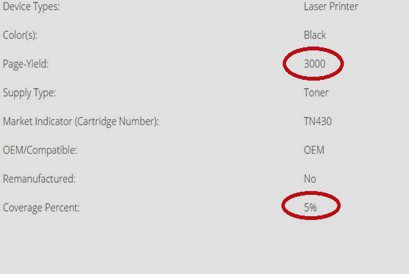
But what should you pay attention to when choosing a device? It is believed that any laser printer (price does not matter at the moment) must meet several basic criteria, of which the following can be noted as the most influential:
- maximum resource in terms of the number of printed pages;
- percentage of use of one refill per page;
- document printing speed;
- Availability universal connections, drivers and software updates;
- price.
Characteristics of a laser printer that you should pay attention to first
When considering the issue of purchasing a printer for your home, you should start with the price and capabilities of the devices themselves, without losing sight of the main equipment manufacturers of this type. Today it is believed that the most optimal laser printers for home use or office needs are those manufactured by Hewlett Packard (HP) Laser Jet series. According to many office workers, it is these models that have the highest speed for printing documents and excellent quality of printed material.
![]()
This laser printer, the price of which in most cases does not exceed one hundred US dollars, prints documents at breathtaking speed. But when choosing such a device, you should pay special attention to the availability of two-sided printing.
In other words, why print a document page by page on several sheets, then turn them over to print the second pages, which is not always possible (you can even simply mix them up)? And here everything is simple! By specifying the appropriate settings, the user receives output in the form of several pages on both sides of the sheet (first and second, third and fourth, etc.).
Scope of application
Of course, laser printers for home use are not limited to this area. Quite often such devices are used in offices, because all documentation is mostly kept in electronic form. But there are some nuances here too. Even the most inexpensive laser printer, which is chosen for the office, should not depend on the operating system of the computer terminal to which it is connected. And there is a reason for this.
A modern color laser printer can even be compared to a television panel. It's no secret that you can easily insert removable media in the form of the most ordinary flash drive, and the preinstalled operating system responsible for managing the device will recognize the document and print it even without a computer.
But a color laser printer is not always useful. The fact is that it turns out to be unable to print photographs in the required quality, and spending refills on printing pictures turns out to be completely impractical. In this case, it is easier to install an inkjet or photo printer.
Black and white models
As for standard office models, among which the first place is occupied by devices such as Laser Jet, and this has its own nuances.
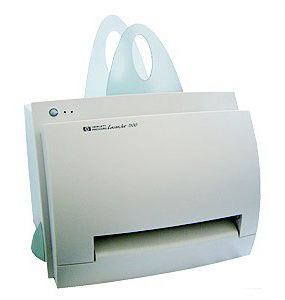
Firstly, when choosing, it is worth considering that modern printers are designed to print 1.5-2 thousand pages in normal mode using only one cartridge. Secondly, you should look at the power supply indicator (power consumption should not be more than three hundred watts). In this regard, reviews call HP Laser Jet 1100 Series devices real “office workers.”
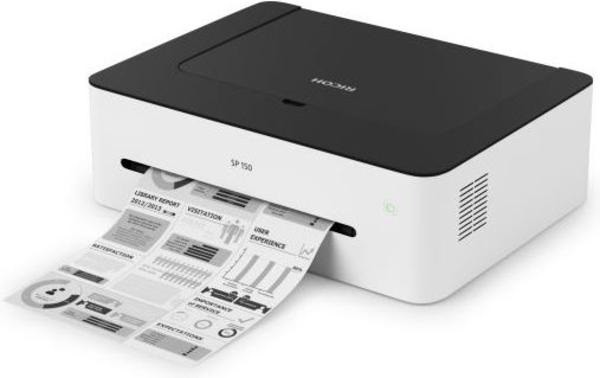
No less interesting solution for the office there will be a reliable laser printer like the Ricoh SP 150w or almost complete analogue Brother HL-1112R.
Color printers
It turns out that using an inexpensive laser printer for printing color images is completely unprofitable.
Quality comes first. Alas, it is far from ideal. The second is the consumption of the coloring component. Third, non-standard control programs and drivers (this will be discussed separately). But even here you can find a universal solution.
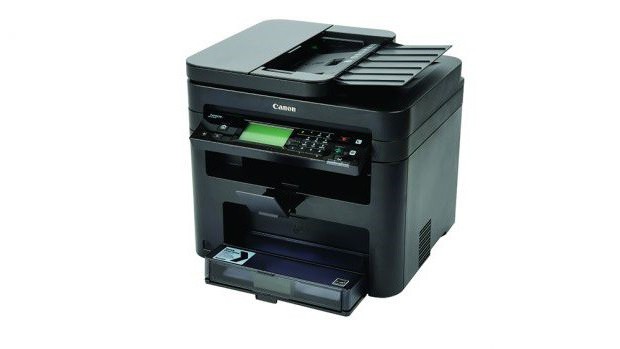
Alternatively, for simple needs, when you need, for example, to print a color diagram, device models like the Ricoh C250DN or printers are suitable Canon series i-SENSYS SP.
In general, as you can see, the top three leaders are Ricoh, HP Laser Jet and Canon.
How advisable is it to use MFPs?
The so-called MFPs, which combine the functions of several devices such as scanners and telephone exchanges with built-in faxes, also need to be used wisely.
Judge for yourself, why buy such an expensive device if nothing else is provided besides printing contracts or receipts? In this case, it is possible to use not only laser models, but also LED ones, which, in general, work on the same principle, although they use a slightly different printing technology from laser.
The issue of price in this case plays a paramount role. Unlike the simplest models, such devices are quite expensive. But even here you should pay attention to some important characteristics. The first and main condition is the printing delay. It should not exceed 20-30 seconds. The second is the print resolution (preferably at least 1000 x 300 dpi).
In addition, at home it is justified to use a device with scanner capabilities for graphic objects or text recognition. As a rule, no one uses a fax or telephone connection at home, with rare exceptions. If there is anything to advise when choosing just such devices, it is worth paying special attention to the laser printer with scanner for the home of the Samsung Xpress C460W series - a device that combines quite a lot of functions. Regarding the characteristics, we can note the printing speed in black and white is about 20 copies per minute, when using color printing - 4 copies per minute.
A special advantage is the ability to connect the device using wireless networks based on Wi-Fi, as well as the ability to print without directly connecting to a desktop computer terminal or laptop.
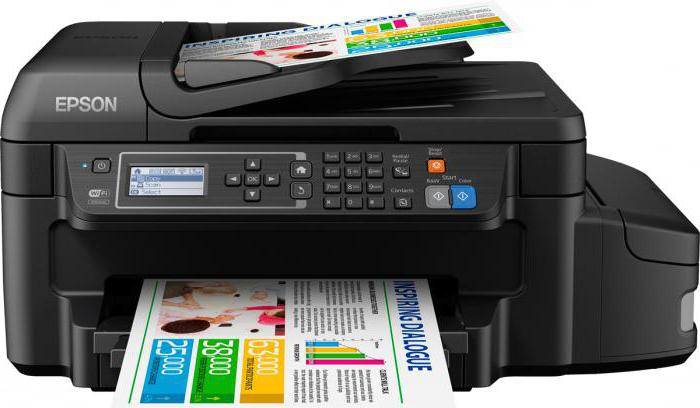
Another completely extraordinary model is the Epson L655. Its advantage is that it has a built-in gripping mechanism. For example, you can simply place a stack of photos in the receiving slot, and scanning, feeding and unloading will be done fully automatically.
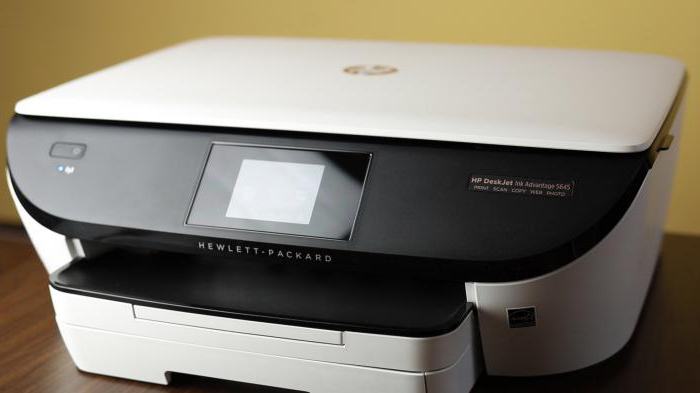
Some models of such devices are also interesting for their design, rather than functionality. For example, according to reviews, the HP DeskJet Ink Advantage 5645 model can decorate any modern interior designed in High Tech style.
What else needs to be taken into account?
In any case, whether a black-and-white laser printer or its color analogue is used, additional costs cannot be avoided.
First of all, this is not even connected with the characteristics of the devices themselves or energy consumption, but rather with the constant purchase of powder, through the use of which the impression is made. Of course, for inexpensive models its cost is purely relative, but for MFPs or color printers it can cost a pretty penny, not to mention communication services provided that such a device is connected to a telephone line. You understand that calling abroad, subject to current tariffs, can be quite expensive.
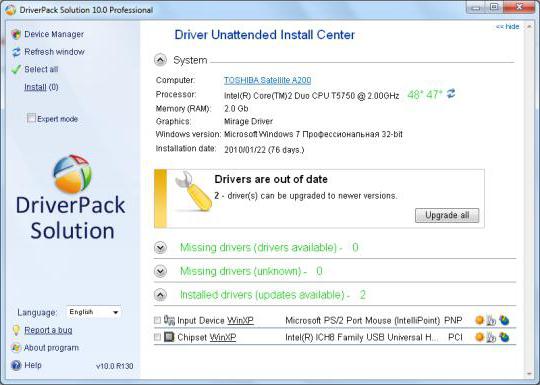
Finally, although Windows systems are capable of recognizing printers automatically, you should always install their drivers exclusively from the disks that come with purchase, or use automated utilities like DriverPack Solution or Driver Booster(which is even better). Such software packages may not even pay attention to their own database, but focus directly on the manufacturer’s official resource, downloading the latest driver modifications and integrating them into operating system without user intervention. Thus, a double effect is achieved: the printer works without failures, and the drivers are updated automatically as they become obsolete and new versions are released.
Trademark Issues
Laser printers for home use should also be considered from the point of view of the popularity of a particular brand. In fact, for a well-promoted brand, the buyer pays about one and a half times more than he could buy a similar device from another manufacturer. And if we are talking about related materials like toner, not counting possible routine diagnostics or repairs, the implementation of which is provided exclusively in service centers, there is nothing to say here.
Bottom line
Thus, to summarize all of the above, any user can be given only one recommendation: he must initially decide on the functions that the purchased device will perform. In cases where only printing tests or primitive graphics is required, it is not practical to use expensive multifunctional devices (both due to their cost and due to unused capabilities).
As for optimal choice For a home or small office, the printer models discussed above, from which only high-quality printing and ease of maintenance are required, taking into account the financial side of the issue, are suitable as well as possible. But you shouldn’t get carried away with “dark horses” in the form of cheap new products that no one knows about yet. The problem here is that not all drivers for such devices will be able to ensure normal operation of the device in Windows environment. In addition, even the highest level of automated programs are not always able to find drivers or control applications for non-standard equipment. And this is precisely their main drawback.
However, most printers are supported in one way or another and Windows systems any modification, and Mac OS X, and even mobile operating systems like Android, which, when installing the appropriate software in the form of RDP clients allow you to control the output of documents for printing remotely from a mobile device.
It goes without saying that not only the cost of the equipment itself plays an important role, but also the cost of maintenance, repairs, or at least refilling the cartridge. Therefore, when choosing a printing device, whether you like it or not, you still have to pay attention to this. And often these are the most important questions after purchasing equipment. But not all users pay attention to such seemingly trifles, and then, as they say, they begin to bite their elbows. Therefore, when choosing a printer for your home, be vigilant (especially regarding related components and maintenance, not to mention universal drivers equipment).
Actually, we can end here. It seems that for most users the main issues related to choosing a printer are already clear.
Today, a home printer is not a luxury, but a necessary device that allows you to solve urgent problems in one click.
The most popular are inkjet and laser models with color printing. The laser type implies a higher price for consumables, but it lasts a long time. The inkjet type has a relatively low price, but is not economical if used infrequently, since the paints can thicken and dry out. The market is literally teeming various types MFPs and it’s easy to get lost in this diversity. Therefore, the consumer often faces the question: which color printer is best for the home?
In this article we will describe the most popular models that have received good feedback.
4,000 rubles
It is an MFP and is designed for those who want to save money. This is one of the cheapest models in the series of inkjet color printers. The mechanism can operate wirelessly thanks to the available WI-FI function. The printing speed is 8 units per minute. The quality of the printed photographs is far from professional, but quite decent. Externally, the device is quite compact. Its average price is 4,000 rubles. This is one of the best budget options today.
7,000 rubles
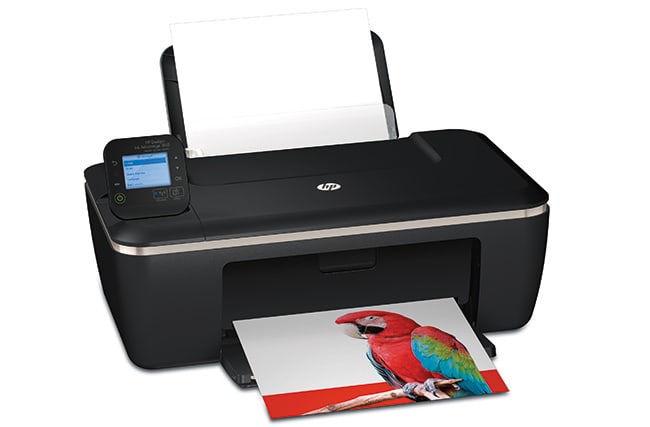
– a good and inexpensive option for home use. The MFP is designed for copying, printing and scanning. Printing type: thermal inkjet. The images come out quite good. One of the disadvantages of this model is the relatively low printing speed - 7 pages per minute. But this negative point is smoothed out by the price of the product, which is about 6500-7000 rubles.
8,500 rubles
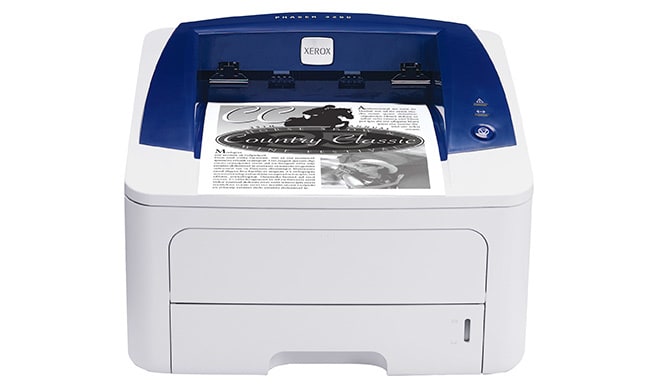
– An excellent budget option for home use. Provides good quality And fast printing– 28 pages per minute. When using a special mode, it uses color cartridges quite economically. The device provides high quality images and is designed for large volumes. The printer also has two-sided printing, but its speed is significantly lower than one-way. The cost of the model is approximately 8000-8500 rubles.
10,000 rubles
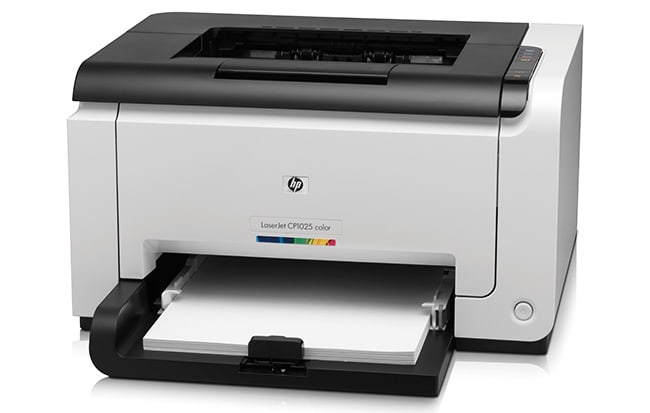
good for working at home or small office. The printer gives high performance quality when printing, including from mobile devices, at home. Connection functions via WI-FI or RG-45 are provided. Print speed is 16 pages per minute. The disadvantages include the relatively small capacity of the cartridges. For home needs, this is an ideal model with a relatively low price policy. The average price is about 8,500-10,500 rubles.
11,000 rubles
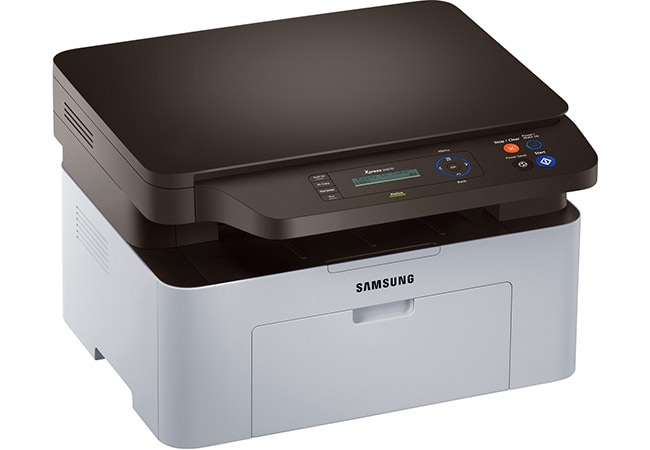
has a good price-quality ratio. The MFP is perfect for home use. The laser printer is equipped with a wireless WI-FI system, which is a big plus. Any document can be printed with one touch; all you need to do is bring your phone to the device and within a few seconds you will have the necessary information in good quality printed form. In addition, the multifunction printer scans information and transmits it from using WI-FI immediately on mobile device. It has a fairly high printing speed of 20 pages per minute. As for the dimensions, this is comparatively small device with dimensions 40x35. For an MFP, these are quite modest sizes. The price of Samsung Xpress M2070W is currently about 8500-11500 rubles.
11,500 rubles
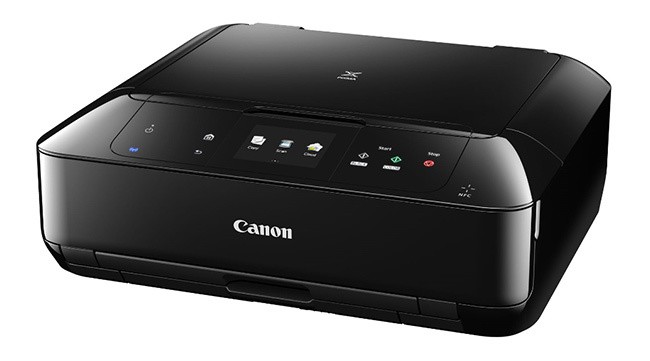
– multifunctional printer for home with WI-FI and Internet. The inkjet MFP includes 6 colors, which allows you to convey the full depth and richness of images. The photographs are of fairly high quality. The printer also features duplex printing. Thanks to a special mode, the device can operate almost silently. The average photo printing speed is 7 units per minute. The device provides wireless printing from mobile and tablet devices, thanks to AirPrint and WI-FI. The Canon PIXMA MG7540 also supports the cloud function, which allows you to print images directly from online services from the device screen. The model is quite compact and will fit well into any interior. The cost of such multifunctional electronic equipment is 11,500 rubles.
15,000 rubles
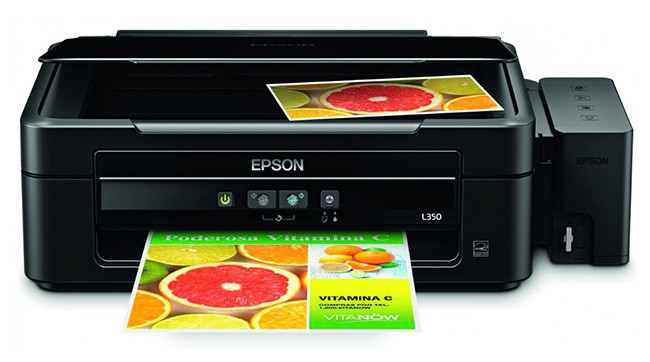
– a multifunctional device that is suitable for work in small volumes. The Epson L_350's printing technology is inkjet, which means the inks dry out with infrequent use. The stated performance speed is 33 pages per minute. But among consumers it was noted that with large volumes, the MFP begins to print more slowly. Otherwise, there are no complaints about the model. The ink consumption is very economical, and the print is of fairly good quality. A special feature of the device is that it works with Mac OS, as well as direct printing from memory cards. The approximate price of an MFP is about 15,000 rubles.
15,000 rubles
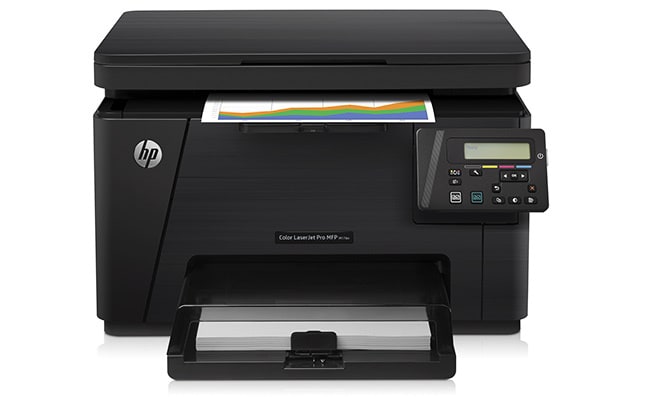
– color laser MFP medium size. It has a good print speed of 16 pages per minute and provides good quality photos and documents. The device can print necessary information, wherever you are. To do this, just send a document or image to the MFP mail and it will print everything on paper itself. The disadvantages of the model include the low supply of color cartridges. Well suited for home use if you print in small volumes. The average price of a printer today is 15,000 rubles.
19,000 rubles
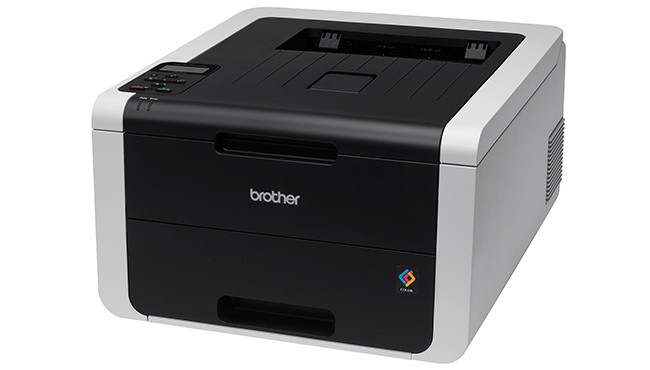
- one of best models for home use. The printer provides high quality images thanks to the presence of electrographic LED printing. The printing speed is quite high and amounts to 22 pages per minute. The model has separate toner cartridge and drum, which will allow you to save significantly when replacing them. Brother has rich functionality and high performance. The device is equipped with WI-FI, Internet and provides printing on almost any type of media. Duplex printing and quiet operation complement the advantages of a color printer. The price of the product is approximately 18,000-19,000 rubles.
Epson Eco Tank L555 28,500 rubles
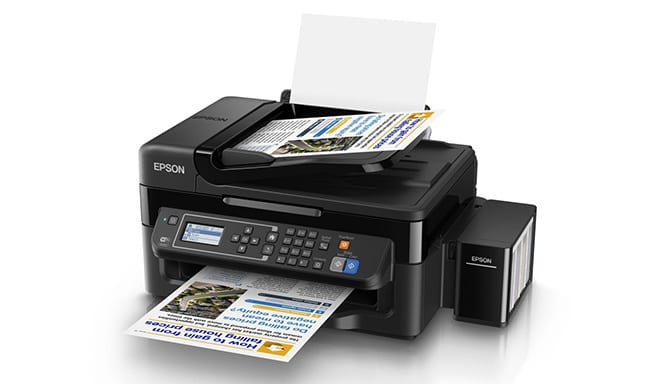
Epson Eco Tank L555 with WI-FI support allows you to print from mobile phones and using the Epson iPrint application provided in the printer. One of the most important advantages of the model is the minimum paint consumption for large volumes. This means that the device is quite economical. In addition, 4-color inkjet printing provides good image quality. Productivity is about 33 pages per minute. The price is quite high compared to similar models - 28,500 rubles.
A home printer is not a luxury, but a necessity for most families. If you have children who are in school, then the scope of the printer becomes obvious. But even for families without a younger generation, a printer will be completely useful: printing digital photos It’s much more convenient at home than in the studio. Choosing a printer for the home - not only the desired model, but also suitable technology.
A printer is a computer peripheral device designed to print the necessary electronic information. This can be text, pictures, tables, graphs, and in general everything that we can visually observe on the screen of our monitor. Of course, even though now is the age of high computer technology and information is mostly stored electronically, but nevertheless, even at home, sometimes you have to print out documents and photographs.
As with office printers, when choosing a device for your home, you also need to decide on the format of the documents you will print. The most popular format is A4 (297 by 210 mm). However, for the home, the optimal photo card format may be 10x15 cm.
Key Technologies Used in Home Printers
Inkjet printers - for every day
Inkjet printers are rightfully one of the most popular printing devices for home and office use. We started looking at inkjet technology back in the article about office printers. Let's look at them in more detail. So there are several technologies inkjet printing: Epson and Brother use piezoelectric technology, Canon uses bubble technology, Lexmark and Hewlett-Packard use thermal jet technology.
The technologies are very similar, and their differences come down to how drops of ink get from the print heads onto the paper. However, each technology has its own advantages and disadvantages. Among the advantages of the piezoelectric system is the ability to flexibly control the droplet size, which is carried out at the “electrical level”, which simplifies the production of high-resolution prints. In addition, the reliability of such a system is much higher than that of all other inkjet printing systems. One of its disadvantages is the relatively high cost of the print head, so it is usually installed in the printer and is not part of a replaceable cartridge. Unfortunately, the piezoelectric head is “afraid” of air ingress or the use of low-quality ink. In both cases, the head nozzles may become clogged and, as a result, the expensive head will need to be replaced. In addition, to maintain the print head in working condition, you should periodically print something on such a printer, otherwise the remaining ink may dry out, after which you will also have to change the head.
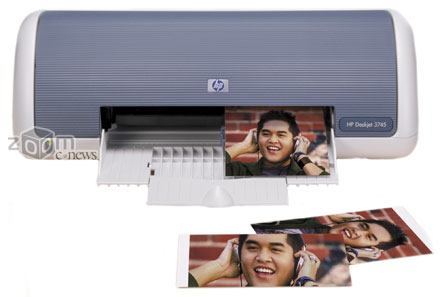
When using thermal inkjet technology, ink is heated to a high temperature and, due to pressure, it is ejected through the nozzles of the print head. The heating and cooling process is repeated several thousand times within one second.
Bubble technology used by Canon is a special case of thermal inkjet printing, in which ink is ejected solely due to the formation of gas bubbles that arise when the ink is heated. The quality of thermal inkjet printing is very high, and the manufacturing technology of print heads is close to that of microcircuits, which makes them cheaper than piezoelectric ones and they are usually built into a replaceable ink cartridge. It turns out to be a little more expensive than an ink container, but “non-original” consumables will no longer be able to completely damage the printer.
All owners of a desktop computer or laptop eventually have the idea of purchasing another printer, scanner, and maybe even an MFP (a multifunctional device that combines a printer, storage device and scanner). After all, schoolchildren and students constantly have to print out abstracts and coursework. But working people also need a printer to print lesson plans, pay stubs or money transfer. But there are still people who are passionate about photography, because it’s not enough to take a photo - you also need to print it!
Today we will talk about what is a printer? How to choose a printer for your home, so that it meets all your requirements. Which printer is better to buy: expensive or budget option, branded or unknown brand, what is better to buy a color printer or subsequently install a CISS (continuous ink supply system). And finally, we’ll find out which printer is better: laser or inkjet, discuss the advantages and disadvantages and make a verdict.
What is a printer and what is it for?
So, what is a printer? This is a computer peripheral device (i.e. not located in), which is designed for printing illustrations, text, photographs on paper with electronic form. The process of transferring information from a PC to a hard medium (paper) is called printing, and the resulting document itself is called a printout. Imagine that you urgently need to print out any application, complaint, appeal, invoice, abstract, or just the necessary illustration. It is in such situations that it becomes clear what is a printer for?. Agree, it’s unpleasant to leave the house and go somewhere 2 blocks away just to print out one page. Therefore, if you have a computer in your home, a printer is a must!
Having asked the question - how to choose a printer for your home, some consult with friends, some with consultants in specialized stores, and some compare models and read reviews on the Internet. Printers are matrix, laser, inkjet and sublimation (thermal printers). They differ in cost, printing speed, size and color (that is, the printer will print only black (monochrome) or will be multicolor). Which printer is better to buy? only you can determine. After all, if in a computer store they tell you about a certain model, you purchase it, and later it turns out that you needed a completely different printer, then this will not be very pleasant. Let's say they sold you an expensive inkjet photo printer Epson Stylus Photo R2000,
This is good. The bad thing is that you are not into photography, but you needed a simple laser printer, for example HP LaserJet P2035
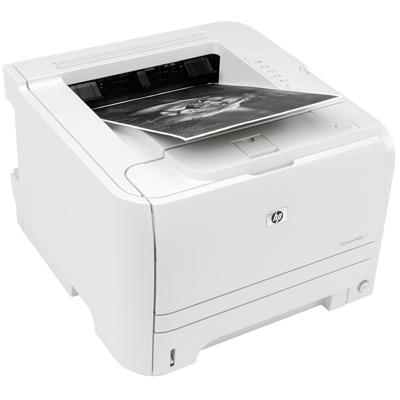
since you print once a month, and only half a page.
So, which printer to choose? First you need to decide for what purpose you need it. If you are a schoolchild or student and print quite a lot of documents, it makes sense to purchase a laser or inkjet printer. It should be noted that you can use a laser printer occasionally, but in an inkjet printer the ink dries out due to long periods of inactivity. If you are engaged in or decide to engage in photo printing, then you should definitely purchase an inkjet printer; printing on original cartridges is quite expensive, so experts recommend installing a CISS.
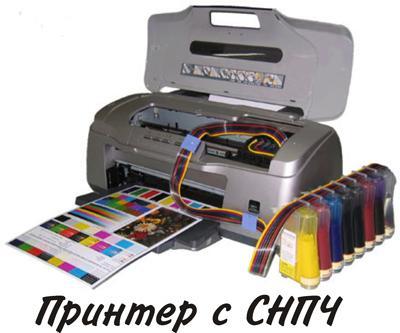
But here again the question of ink arises; with the CISS installed, it is recommended to make a printout once a week test page printer, unless of course you printed something else this week.
What is CISS and what are its advantages?
I would like to talk about it in even more detail. The continuous ink supply system successfully replaces the cartridge, making the printer more efficient. Ink is automatically supplied through special tubes, which has a positive effect on print quality and saves you money. To work with CISS, you need to purchase paint on time, which is much cheaper than buying new cartridges, and pour the paint into special containers. You can install and refuel the CISS yourself, but I recommend inviting a specialist in the first few steps. It should be noted that CISS may not work with all inkjet printers, since it is more profitable for manufacturers to sell original expensive cartridges.
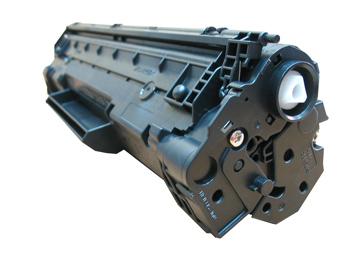
The cartridge is a special plastic box. It stores ink (for an inkjet printer) or powder (for a laser printer). Manufacturers produce cartridges so that they fit only a certain printer model. The price category is quite broad and is formed depending on functionality, size, and capacity of consumables.
Dot matrix printers are too noisy and their print speed is much lower than laser and inkjet printers.
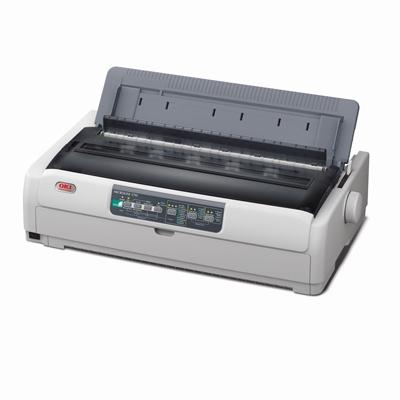
Of course, at the moment new, faster and quieter models have appeared, but they are unreasonably expensive. They are used mainly in banks, government and educational institutions.
Dye-sublimation printers are mainly used for printing DVDs, CDs and plastic cards, although thermal printers print higher quality images, they are rarely used for home printing because the consumables are too expensive.
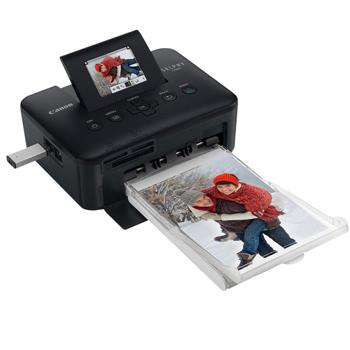
These printers are also used to print images on T-shirts, mugs, etc.

Another disadvantage of this printer is the extremely slow output of the photo; it takes about 3 minutes to print a photo of 10 x 15 cm, but the advantage is the long-lasting image due to the protective layer that prevents the ink from evaporating.
Models Epson Stylus Photo 1410, Epson Stylus Photo P50, Sony DPP-FP55, Canon SELPHY CP730, Xerox ColorQube 8570N, Canon Selphy CP800 and Epson Stylus S22, Epson Stylus Office T1100 have proven themselves to be the most optimal in terms of price/quality.
How to choose a printer for your home? Which is better?
Which printer is best for home? It should be a relatively inexpensive, high-quality, economical printer that does not take up much space. I think you will agree that with all the positive qualities (high-quality double-sided printing, a large number of printed sheets per month, more than 100 thousand and the ability to print in A3 format), the HP LaserJet 5200DTN office printer with dimensions of 140 cm by 1 meter and weighing more than 50 kg you won't need it anyway. For your home, you need to purchase a high-quality printer that is easy and inexpensive to use. Only laser printers meet these requirements. Inkjet printers are much cheaper, but here's the catch: these printers are too expensive to operate.
Laser printer.
So, what is a laser printer? This is one type of printer that allows you to quickly produce high-quality prints on plain paper. Prints of text and graphics are resistant to fading and abrasion, and are not afraid of moisture. The quality of such images is high. The basic principle of operation is the process of laser scanning, then applying and transferring toner, and then fixing it.
How to choose a laser printer so that you can subsequently enjoy printing and not scold yourself (for the purchase), consultants (for advice), friends (for help in choosing). Manufacturer's choice ( trademark). When you buy a printer, you are not only paying for the product itself, but also for the brand. And this is fair, since branded items have an excellent service system. The availability of spare original and compatible parts and consumables is worth you paying a certain amount for the brand. In my opinion, the best are HP, Canon, Xerox, Samsung.
Next you need to select a printer model. First, decide on your monthly load, that is, how many pages you will print every month. Please note that if the recommended print volume is 6,500 pages per month, your printer will not work longer than the stated period (since the load will be exceeded). In other words, if you need to print 5,000 thousand pages per month, buy a printer with a recommended print volume of 6,500-7,000 thousand pages.
The printer configuration depends on your needs: duplex (double-sided printing, additional trays and memory, finishing devices and built-in hard drives).
It is very important to find out before purchasing a printer whether you can refill it; some manufacturers put a chip on the cartridge to prevent refilling and force the consumer to buy new cartridges.
Jet printer.
Now we will answer the question what is an inkjet printer. This is a peripheral device designed for printing not only documents, but also photographs, color diagrams, and graphs. The image on special paper is formed from dots; inkjet printers use a matrix that prints with liquid dyes. In order to reduce the cost of printing and improve the characteristics of the printer, CISS is used.
Now we will look in more detail, Which printer is better, laser or inkjet?? As mentioned above, many consider an inkjet printer best choice for the home, it is supposedly 2-3 times cheaper than a laser, and it is easy to refill and the ink is inexpensive. But let's look at this statement from the other side. Since inkjet printers are often purchased for multi-color printing, you can refill ink 1-2 times, and then you will have to buy a new original cartridge, which costs as much as new printer. A laser printer costs much more than an inkjet printer, but at the same time, it is much cheaper to maintain, since the toner for it costs between $2-7 and you can refill it yourself. In terms of printing speed, laser printers are much superior to inkjet printers; for comparison, 17 pages per minute for a laser printer and 7-9 for an inkjet printer. At the same time, the laser makes less noise, you don’t need to worry about dried ink, and the toner in the cartridge can be stored for up to a year. In an inkjet printer, you will have to constantly send a test page to print or clean the print head (if the CISS is installed, you will have to clean the nozzles).
The print quality of both printers is the same, but it should be noted that high-quality printing on an inkjet printer is only possible when using paper with a special coating; on regular paper, the design or edges of the letters become “shaggy.” Please also note that inkjet printouts are susceptible to fading, smearing, and exposure to water.
In defense of the inkjet printer, I would like to say that it is much more environmentally friendly than a laser printer, since ozone is released when printing on a laser printer.
Advantages and disadvantages of inkjet and azure printers.
Advantages and disadvantages monochrome laser printer:
- Plus: high printing speed, low cost of consumables, ideal for printing large and small volumes of text, designed for high printing load.
- Minus: not suitable for printing images, photographs.
Advantages and disadvantages color laser printer:
- Plus: high printing speed, printing images, color diagrams.
- Disadvantage: high price, not suitable for printing photos, presence of elements with high power consumption
Advantages and disadvantages inkjet printer:
- Plus: low price, in modern (and, as a result, more expensive models) high printing speed, excellent color printing, low price for a set of cartridges.
- Disadvantage: high cost per print, intensive replacement of cartridges, ink dries out if not used.
Laser printers of these models: HP LaserJet Pro 400 M451dn, Lexmark T650n, Xerox Phaser 4600N, Canon LBP-7750CDN, without a doubt, deserve your attention. Which inkjet printer is better? It's up to you to decide, the main thing you should pay attention to is the quality and speed of printing, price, ease of use, here are several models that combine all of the above: Canon Pixma iP-4200, Epson L-800, Canon Pixma iX-6540, HP OfficeJet Pro K8600dn.
This is the end of the educational tour of another one - the printing device. I hope that now you can easily navigate and not confuse inkjet, matrix and laser printers, and CISS will no longer be an incomprehensible abbreviation for you. Good luck!




